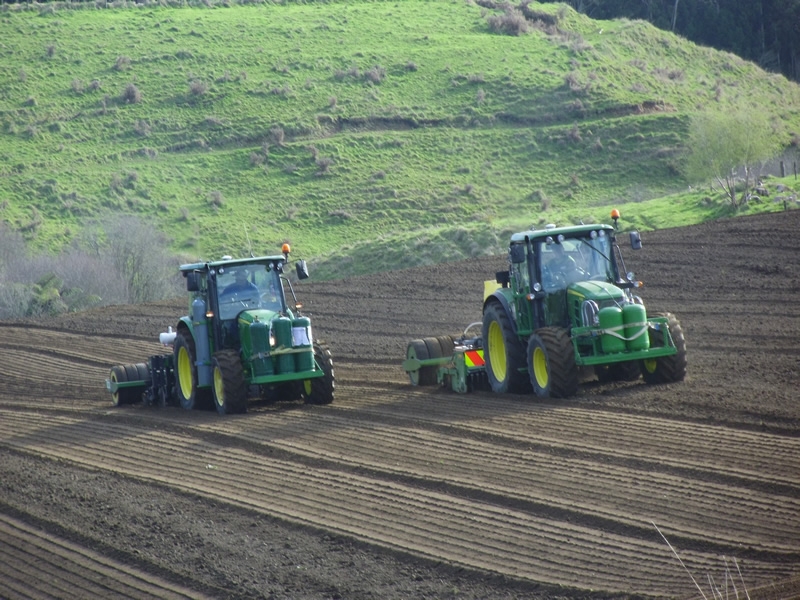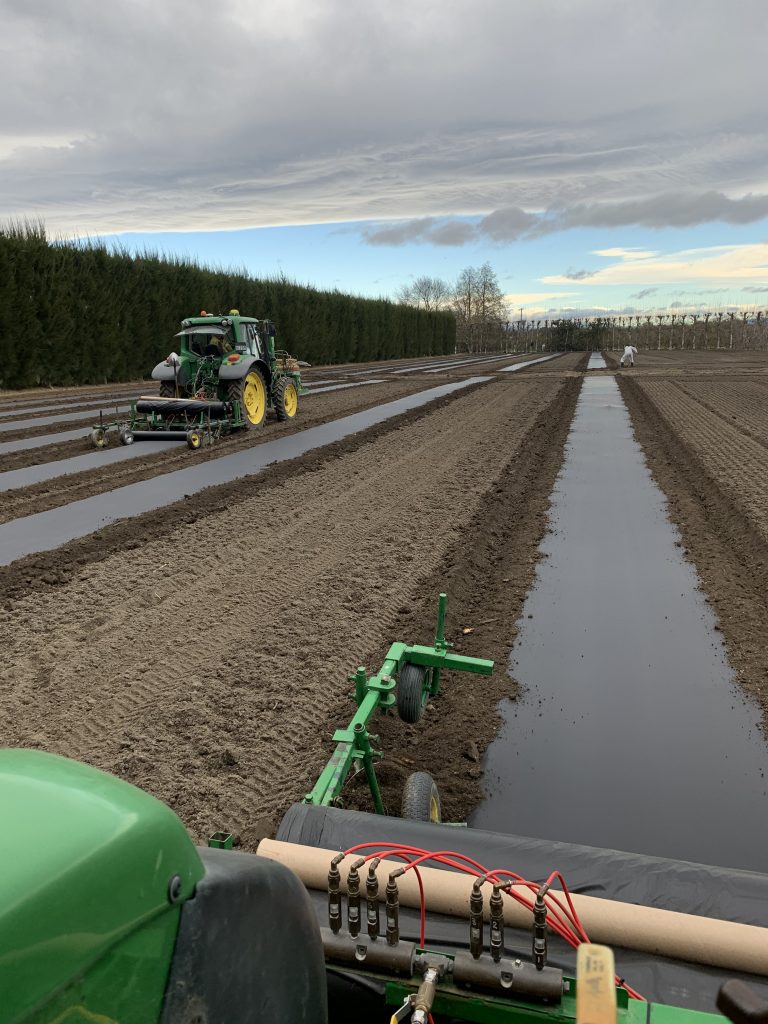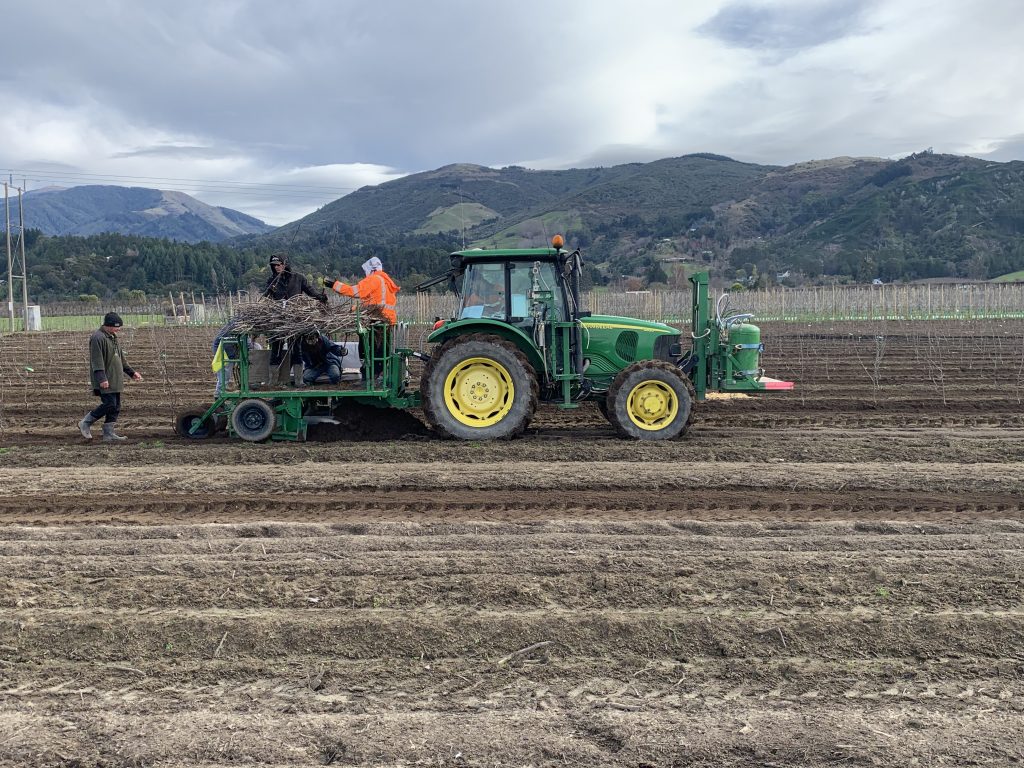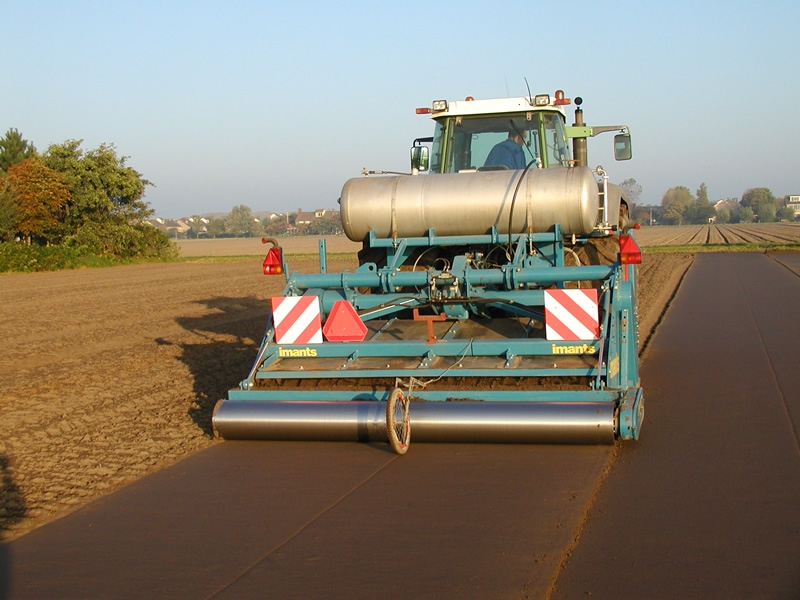Leicesters provides a number of soil services to fruit and vegetable growers throughout the country. Crops include potatoes, melons, onions, strawberries, nursery crops and many more.
Our services include:
- Broad acre
- Row crop
- Strip
- Bed forming
- Polythene laying
- Apple tree planting
- Metam Sodium
Application and Soil Preparation
Soil disinfestation should be timed according to the environment factors that influence the effectiveness of fumigation, especially soil moistures and temperature, autumn / spring. Clear the soil of fresh or decaying plant material first, as it t may partially absorb soil fumigants, preventing the fumigant diffusing through the soil air spaces. Soil should be cultivated to a depth of at least 30 to 35 cm, the deeper the cultivation, the better the penetration of the fumigant. Sub –soiling can also increase the effectiveness of fumigation by improving penetration of the chemical into deeper layers of the soil profile.
Soil Condition
Soils that are too wet or too dry will reduce the effectiveness of soil fumigation. For optimum effect the soil ready to be fumigated should be about 2/3 field capacity starting 8 to 14 days before treatment. This can be tested by doing a simple squeeze test. Soil temperature is also an importamt element. Temperatures between 10 degrees and 29 degrees C at depths of 15 to 20 cm are appropriate for soil fumigation. Final cultivation prior to application will help pulverise clods and remove plant trash, giving a level surface finish.
Sealing, Exposure Period and Aeration
A temporary seal is needed to prevent excessive diffusion of sol fumigants from the top several cm of soil. Polythene film, Packing, rolling, and light irrigation are usually sufficient to seal some fumigants Fumigated soil should be left undisturbed for some period of time after application. How long will depend on the type and rate of fumigant, the crop and target organisms, and environmental conditions. Waiting periods are specified on the product label for soil fumigants.
Broad-acre Tarp

Injector/tarp-laying machines enable larger areas to be treated by a mechanized glued-strip system. Successive tarps are glued together at each pass of the machine until the entire field is fumigated in one continuous operation Broadcast treatments provide a broader zone of protection against nematodes, soil fungi and weeds.
Broad-acre Non Tarp
Injector machine, which applies the fumigant deep into the soil, sealing the chisel trace above the fumigant outlet and at the soil surface. Soil surface is compact rolled to seal in the fumigant. Water seal may be applied to enhance the seal of the soil surface.

Bed Treatment

Beds are pre-formed and shaped by a tarp laying machine that shapes and compresses the bed, injects the fumigant and lays irrigation drip tape, prior to sealing the soil with a high barrier plastic film. Suited for Strawberry beds and other berry crops.
Polythene Laying
Laying of polythene film including irrigation drip tape on bed rows for fruit and vegetable crops. Fumigant application can be applied at the same time as polythene is being laid.

Row Crop Fumigation

Disinfecting only the planting bed by precise application and thus optimising fumigant use. Suited for potatoes, onions, carrots, and a variety of other crops.
Strip Treatment
Fumigation with plastic mulched strips, approximately 0.8m to 2m wide for certain crops such as melons and apple replants.

Apple Tree Planting

Mechanised apple tree planting using GPS.
Metam Sodium
Rotary spading injector for the application of Metam Sodium a liquid soil fumigant. Fumigant is applied evenly at depth of 10cm – 20cm beneath the soil surface in front of the spading machine. It is mixed through the tillage layer by the rotating spading blades. The soil surface is leveled and compacted by the rotating harrow and “sealed” by a power driven roller.



